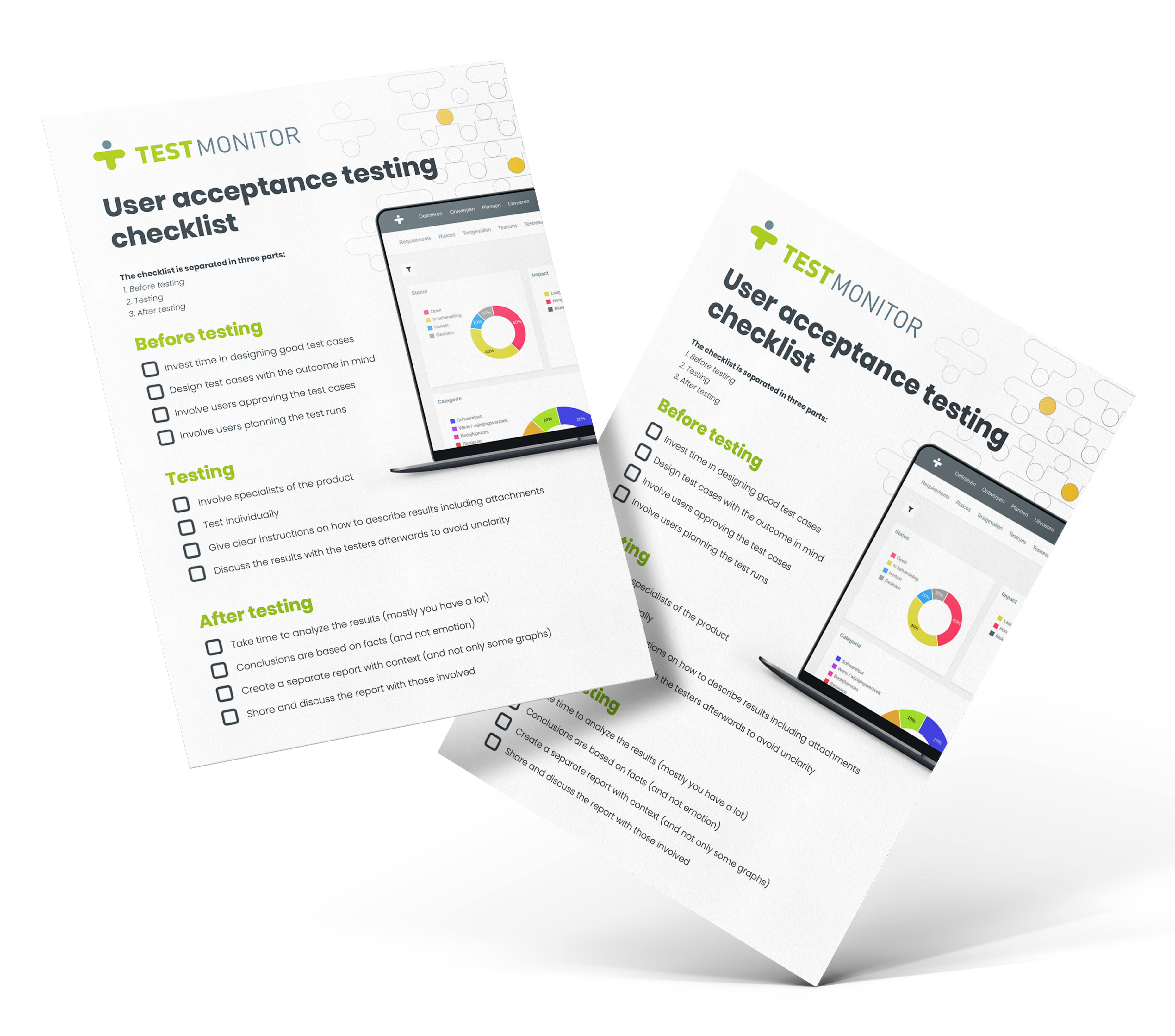Check out tips, templates and checklists for User Acceptance Testing.

User Acceptance Testing is the process through which the interface and functions of a website, app, product or service are tested by real end users. A number of people perform a series of typical tasks on the product. The purpose of this process is to evaluate the usability and functionality and to decide whether the product is ready to be launched in production. It is important that the test is done on an individual basis so all the subjective results can be analyzed and made objective. In this case the definition of User Acceptance Testing is focused on Black Box Manual Testing. (Black Box means testing the function or behavior of a system or product.)
712c.png)
Download this DIY checklist on UAT.

In user testing context the form declares the status of “fit for purpose for the business area”. When all defects are resolved, the test manager recommends to accept the product as developed and implemented to the project manager. The approval shows the product meets requirements and is deployable.
The form can have different layouts. We recommend to use some figures out of TestMonitor to make the document more visualized. For example the different states of defects or the test coverage while signing. But we also participated in projects where the sign off form is more textually. For both forms, it must be clear that in this case you take:
A streamlined process containing everything. From defining, designing, planning and running tests to tracking test results, resolving issues and reporting.
User testing requires a different approach. Our intuitive test registration allows your users to report their findings within just minutes.
Organize every test, no matter how complex. Stay on top of your planning, follow developments and gain insight into the actual quality of your software.